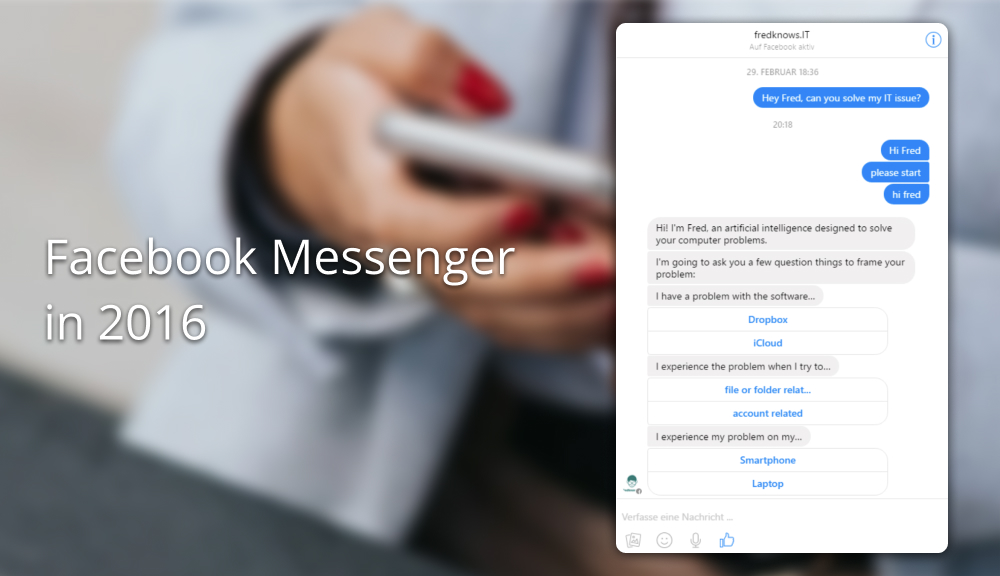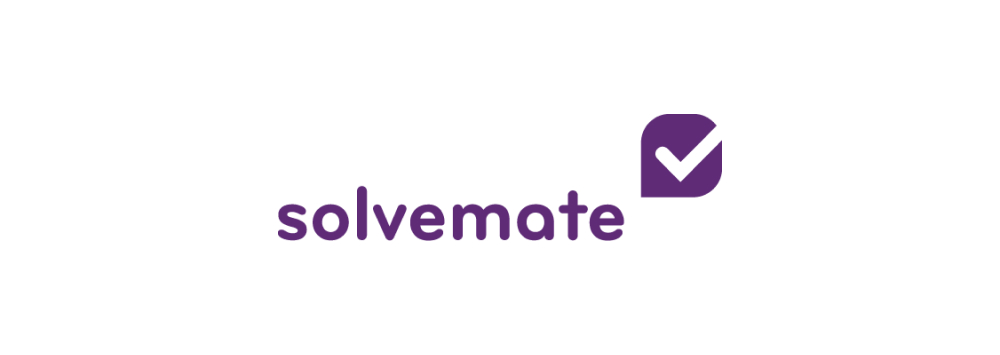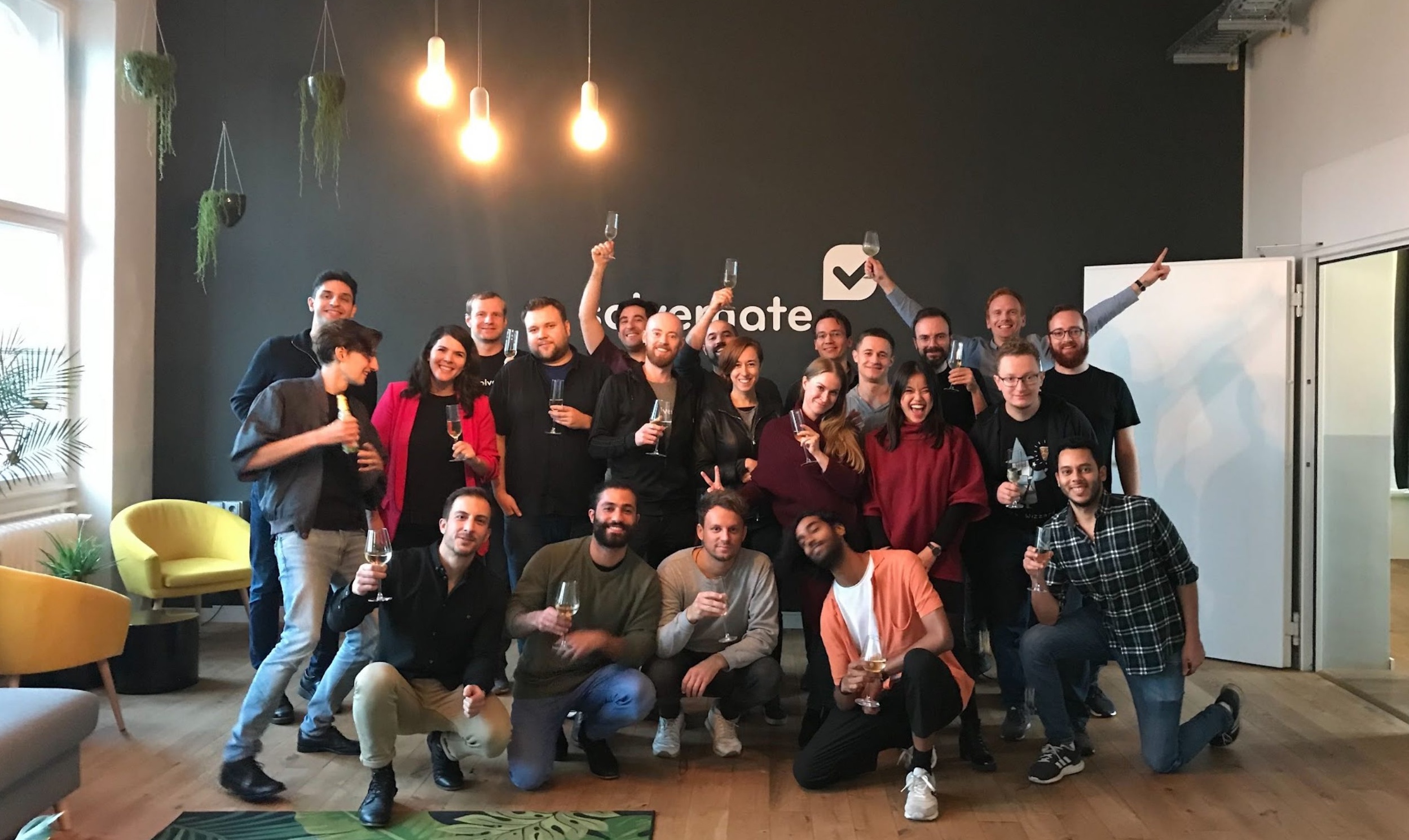Solvemate: My Startup Journey
After years of working at companies with poor culture and weak leadership, I co-founded Solvemate in 2016. In 2022, we were acquired by Dixa, after years of growth and challenges. This article will disclose the ups and downs of that story.
- My motivation to start the company and the early days after its inception.
- The process of nailing down our product vision and culture.
- Reflection on how we fueled our growth and the challenges involved in that process.
- The acquisition of the company and what comes next on our way to our BHAG.
I recommend reading this article if:
- You are thinking about starting your first startup.
- You already began your startup and are looking for outside perspectives and experiences about the process.
- You are interested in entrepreneurship and looking for a few new concepts to have in your tool belt.
Happy reading!
Motivation
It was mid 2015, and I was engrossed in my CTO role. It was hard work; I was actively trying to turn around a company that had suffered from poor communication and a nearly invisible leadership team. I realized this was a pattern I had seen in unsuccessful professional environments all too often: circulating rumors, quiet quitting colleagues – meaning people doing only the bare minimum, without any additional care for company purpose – and managers on the scale between less than honest and outright deceptive.
I was truly frustrated by my situation. So much more was possible if the company could just find a way to excite and engage their employees. I began to immerse myself in literature on company culture and leadership and then discussed what I was learning with others in the tech world. While some shared similar experiences, most people worked in more positive environments. Most inspiring to me were my friends from Blinkist, a company whose culture was inspired by Holacracy.
All of this proved that I had to do something. I knew there was a better way to run a company. And what better way than to start my own?
Tech, Tech, Tech
When I first met my co-founder Erik, he already had a product hypothesis: a way to leverage machine learning to build the next generation of expert systems, oriented towards issues with everyday tech. Or as you would call it today: a troubleshooting chatbot.
In January 2016, we started to build out a first prototype, thanks to the help of a small team of junior engineers. I was coding all day at the time, so I helped my peers to get set up on our Python code base. The first few months were spent validating the technical possibilities of our core hypothesis and building out what later became the core of our machine learning approach. At the time, we didn’t know how to conceptualize any potential product-market fits for what we were doing. Still, we continued on in our innovation.
This started to change in April 2016: Facebook opened up Messenger for chatbots. This was the birth of conversational experiences.

Fun fact: We built a bot based on our self-learning algorithm for Facebook Messenger and listed it on Facebook’s App Store. The chatbot is set to ask you to think of any animal, and by asking a few questions, it is able to tell you which animal you’re thinking of. We called the bot “Zookinator.” Shortly after publishing it, it went viral on Pakistani schoolyards.
This experiment was a great demonstration of our bot and how it could learn and adapt based on given circumstances. For example, people who used our bot often weren’t sure if cats were predators or not. In our initial bot training, we claimed they were not, as we were only considering our own lazy cats at home. After some time, the bot decided this was an irrelevant question for identifying cats, as there was no consistent opinion it could find. In case you were wondering: they are.

Also around this time, Intercom changed the way businesses interacted with their customers by introducing the chat beacon, otherwise known as the now-ubiquitous bubble at the bottom right corner of websites. More conversations also meant a higher workload for service teams and a flood of simple questions. Who would read the FAQs if they could just quickly ask that same question in the chat?
Finally, we found the perfect fit for our technology. The next step was transforming this technical idea into a product vision and a company culture.
Product Vision
After starting the company in 2016, building tech prototypes for several months, and keeping an eye on industry trends, we could finally see a potential opportunity for our idea: we had the power to build a customer service chatbot that would help companies by automating frequent requests and actions and then looping in agents to assist customers as needed. This would surely make customers happier because they’d get instant help across the board, and it would also greatly reduce the time agents needed to spend on mundane tickets.
We also knew from our team’s extensive background in ecommerce that it is historically very challenging for customer service teams to get attention from engineering departments. Customer service is typically seen as a cost center. Thus, even though a collaboration with engineering could help to automate lots of processes for both agents and customers, most customer service teams are doomed to work across various disconnected tools, performing manual and repetitive tasks.
To validate these hypotheses, we reached out to founders of ecommerce companies that we already had in our network. We offered them our product for free in exchange for some feedback on its effectiveness. This was a good hack and proves just how important it is to nurture your network.
We started with three companies. For each, we deep-dived into their customer service organization. Even though many points of our analysis were still unclear at that time, we did see a strong indication that companies struggle with their customer service. We knew our product vision was viable.
From this moment on, it was clear we were going to build a SaaS platform specifically built for customer service teams. To make our vision tangible and inspiring, we defined a Big Hairy Audacious Goal, in short BHAG (pronounced bee-hag). In contrast to a mission statement, it’s short and catchy. Everyone in your company should know the BHAG by heart. Ours was:
“Solving one million customer requests per day”
After we signed our first paying customers in 2017, we figured it was time to give the company a proper name and logo.

And to spread the word, we shot a movie to promote our product in a funny and entertaining way:
Finally, two years after our first prototype, the company was accelerating!
Culture
As the company came together and the team grew, we recognized the importance of investing into the foundation of our company culture. We knew we didn’t want to reproduce what we had both seen in our careers so far: unmotivated, ununified culture. We knew we needed to:
- Hire people with similar ethical codes to ours.
- Keep up the spirit of the early days, even as we grew.
- Assure the company was able to evolve, while we still kept it true to its values.
Inspired by Netflix’ culture deck – initially published in 2002 as a 128-page slide deck – we decided to write our own. It makes the implicit explicit, describing our values and the parameters for how we want to work and collaborate. Our goal was to not just capture the status quo but to lay out the foundation for our future. This culture represented the company across time, envisioning everything from growth to our BHAG.
The initial document came together over three days of workshops, but the deck has been ever-evolving since then. We have been revisiting the document three times a year in order to allow every college a chance to propose changes and vote on them. Any two-thirds majority saw the change applied. No veto from founders was allowed, though we have also never faced any situation where we would have had to intervene.
We based the culture deck on our vision of building a company that goes beyond the principles of typical “like a family” companies. Together, we read the book Reinventing Organizations by Frederic Laloux, which describes the evolution of organization management. We were convinced we wanted to strive for a “teal organization”, based on this structure. Following Laloux, these are based on three main principles:
- Self-Management: everyone makes decisions and bears responsibility.
- Wholeness: work is a fundamental part of everyone’s life, not just a duty.
- Evolutionary Purpose: the organization is shaped over time by all of its members.
After internalizing this, we came up with our five core values:
- Teamwork
- Transparency
- Candor
- Commitment
- Curiosity
For each, we laid out what the value means to us and how exactly we want to implement it. We didn’t go into every detail – the culture deck shouldn’t include detailed procedures or policies – but described our understanding with concrete examples anyone could relate to.
While these core values of the early days have persisted since then, the specifics of what these values mean was changing. If you are interested, you can check out the last April 2022 iteration here.
Growth
Once we were backed by investors, we were able to really invest in our product development. Building an automation platform requires cohesive integration across many different tools: ticketing systems like Zendesk, third-party backends like web shops, logistics partners like DHL, self-built services like an order management systems, and others. We wanted to make the platform easy for customer service agents to use, while also integrating all these tools.
Our target markets were Germany (we were based in Berlin) and the Nordics (our Norwegian CRO had great insights into this market). Upon entering the market, we quickly found that we were in a new and not-yet-established market category. Companies did not yet understand why they should automate customer service requests. They didn’t have budgets for customer service software, and the typical Head of Customer Service even didn’t have the power to lead the company’s CX (Customer Experience) strategy.
We already saw a few other players on the market, notably Ada which focussed on North America and was already very successful at the time. Yet companies in the European market didn’t see CX as an important priority yet. We were just ahead of the curve.
Our GTM (go-to-market) strategy was therefore focused on consultative sales. We talked directly to decision makers, quickly identified their pain points, and proved that our service could solve these problems easily. Our easiest sells were modern, tech-savvy companies with 10 to 100 service agents in the ecommerce and digital service space. Additionally, we worked with innovation managers of well-established companies (incumbents) like banks and insurance companies. These managers were actively pushing innovation projects as company-wide proof of concepts with a dedicated budget. We focused in on those sweet spots.
Over the course of three years, we managed to acquire numerous top companies in the field, including On Running, WeTransfer, and SumUp.
In my opinion, we were most successful because of these three pillars:
- Customer success: We overinvested in customer success. Since our product was the first chatbot and automation solution for most of our customers, we had to make sure they understood the product in depth in order to apply it in the best way possible and experience success.
- Professional services: Our strategy was always focused on the self-service SaaS product. However, to get companies started and to get the product well integrated with their tech stack, we went above and beyond. This included offering custom onboardings, regular bot performance reviews, and assistance to customer tech teams with the writing of integration code.
- Case studies: We built in-depth case studies, which were complemented by professional videos and joint webinars. Sharing the successes of well-known brands helped us build credibility and pushed their competitors to follow.
As a result, we were able to steadily grow the company and reach a multi-million-dollar ARR (annual recurring revenue), paired with an outstanding net retention rate. This means that each year we could increase the revenue of existing customers through upsells, rather than losing through churn.

The Solvemate team, celebrating a new customer in mid-2019.
Challenges
The process of building a company is never linear. Over the course of our journey, we had to continually adjust our strategy based on difficult challenges. Below are the four most generative difficulties I identified in retrospect:
#1 Starting with Tech
Our initial product idea was very techy. It was so techy, in fact, that we weren’t sure where and how to apply it. We started to build out a prototype which proved how our algorithm worked, but our example applications were misguided: between a person and animal guessing game and tech support for common Dropbox issues. It took us quite a while to identify bigger pain points that we could solve beyond the core engine, based on our customer service research.
I learned: Problems lead to tech; don’t build tech before knowing your problem.
#2 Building a Platform
To get the most out of our product, we had to build integrations with various customer service software providers. All of this required tremendous work up front, as we needed to have in-depth knowledge for each tool. Building an integration with Salesforce, for example, and getting listed on their app store was a nightmare. Weeks and months went into this process, with very limited results. Of course, platform players have the best potential to win new customers, but the complexity of this problem can potentially kill a startup.
I learned: Start with a small and super specific tool for a specific problem. Once it proves its value, grow it into a platform based on the customer’s needs.
#3 Sales-led GTM
As we saw product success, we started to build out a typical sales team with SDRs and AEs. In general, a sales-led GTM approach makes sense for expensive products you can’t typically buy with a credit card, especially if such products literally change the way teams work. Think of a warehouse management system or a call center telephone system.
For a startup, however, this has three major risks:
- You have less incentives to build a simple yet super valuable product because you believe that you can figure that out later.
- As account executives (AEs) are incentivized to chase big deals, sales cycles take long. Additional features must be promised to accommodate those.
- As a consequence, product development, marketing, and sales point in different directions. It’s difficult to be in control of the product narrative. This confuses your teams and customers.
I learned: Start out with a strong product marketing and growth team, focusing first on building an easy-to-adopt product. Then, grow slowly into bigger, sales-led deals.
#4 Junior Engineers
We built our initial team around junior engineers. They were all super motivated, excited by the early-days startup life, and full of great ideas. Some ended up staying with us for many years and grew into senior roles. Throughout my career, I always loved to coach my team and to help them in their growth trajectories. However, in an early-startup, this focus on coaching can take away your focus from your most important job: code, ship, validate, all as fast as possible. I had to dedicate a big chunk of my time to helping them improve their programming skills, teaching them architectural concepts, and getting their time management locked in. As I was not yet so experienced with leadership, this led to frustration and conflict around expectation management and code quality.
I learned: I would prefer to have one experienced and product-driven engineer over two entry-level engineers. Speed matters in the early days, and the less you spend on coordination and training, the more time you have to actually build and validate the product. Also, read and internalize the book Radical Candor to assist with this.
Market Consolidation
In 2020, 5 years after our start, the market for service automation began to gain speed. Chatbots used for customer service started to become a necessity, so competition was rising. Traditional ticketing platforms like Zendesk and Salesforce Service Cloud were starting to shift their focus towards CX and were building their own chatbots and automation tools.
On one hand, this was very positive; it reinforced the CX automation trend and gave us vital momentum, as this field was our speciality. On the other hand, growing competition and ticketing platforms with their own solutions led to some no longer prioritizing partnership with us. This could’ve been a serious threat, as these platforms could easily give away their automation tools for free and squeeze others out of the market. Ultimately, a natively-integrated solution always has the potential to drive better results than a third-party tool.
Market consolidations typically follow similar patterns. While we went from opening a market to scaling our business, well-established players in the CX industry were trying to find even more ways to monetize their platforms and were therefore looking for companies to complement their offerings. Naturally, this leads to a bigger vendor lock-in and more revenue. In retrospect, these phases are easy to identify. However, as the market evolves in real-time, it might be difficult to spot them and find the right moment for an exit.
Acquisition
We decided to start a structured process right off the bat, talking to many companies over multiple months. Through these discussions, we aimed to understand their strategy and position ourselves as the perfect platform add-on.
Long story short, we found the perfect partner: Dixa, an ambitious player and market challenger who already happened to be a partner of ours. We immediately felt a strong connection with their leadership team and vision. They had just gone through their $100M Series C round and were ready to complement their product offering with our services.
Over the following months, we built out a deep product integration and bundled the products under Dixa’s brand. This allowed for a unified go-to-market strategy and made it very easy to cross-sell the chatbot product to new and existing customers of Dixa.
 Celebrating at our off-site in Croatia.
Celebrating at our off-site in Croatia.
2024
Today, the CX trend is omnipresent, and with the rise of generative AI, chatbots and automation have become a foundational pillar in product strategies of customer service platforms. Companies like Intercom have completely changed their product strategies and are now fully focusing on AI. Huge players like ServiceNow were able to almost double their stock price by pushing their AI strategy and showing another year of significant growth all the same. Companies like Klarna significantly reduce their first-level support needs with a deeply-integrated chatbot they developed with OpenAI.
At Dixa, we doubled-down on our AI strategy and built a suite of small yet powerful tools across the workflows of service agents to help with efficiency. The Solvemate product suite is now evolving into the natively-built Mim platform. Two years after acquisition, our strategy is paying out, as AI features are becoming even more of a leading differentiator which fuels our growth. While market consolidation is still going on, it has already been crystallized that early-movers have a huge competitive advantage.
So, what’s my conclusion?
This journey has been the best experience of my professional life. Growing with a company is an unparalleled learning opportunity. It is unbelievably satisfying to look back at the culture, the product, and all the people who have contributed over the years.
And the journey is not yet over! Eight years after starting Solvemate and proclaiming our BHAG, we are closer than ever before to reaching it: to solving more than one million customer requests a day.